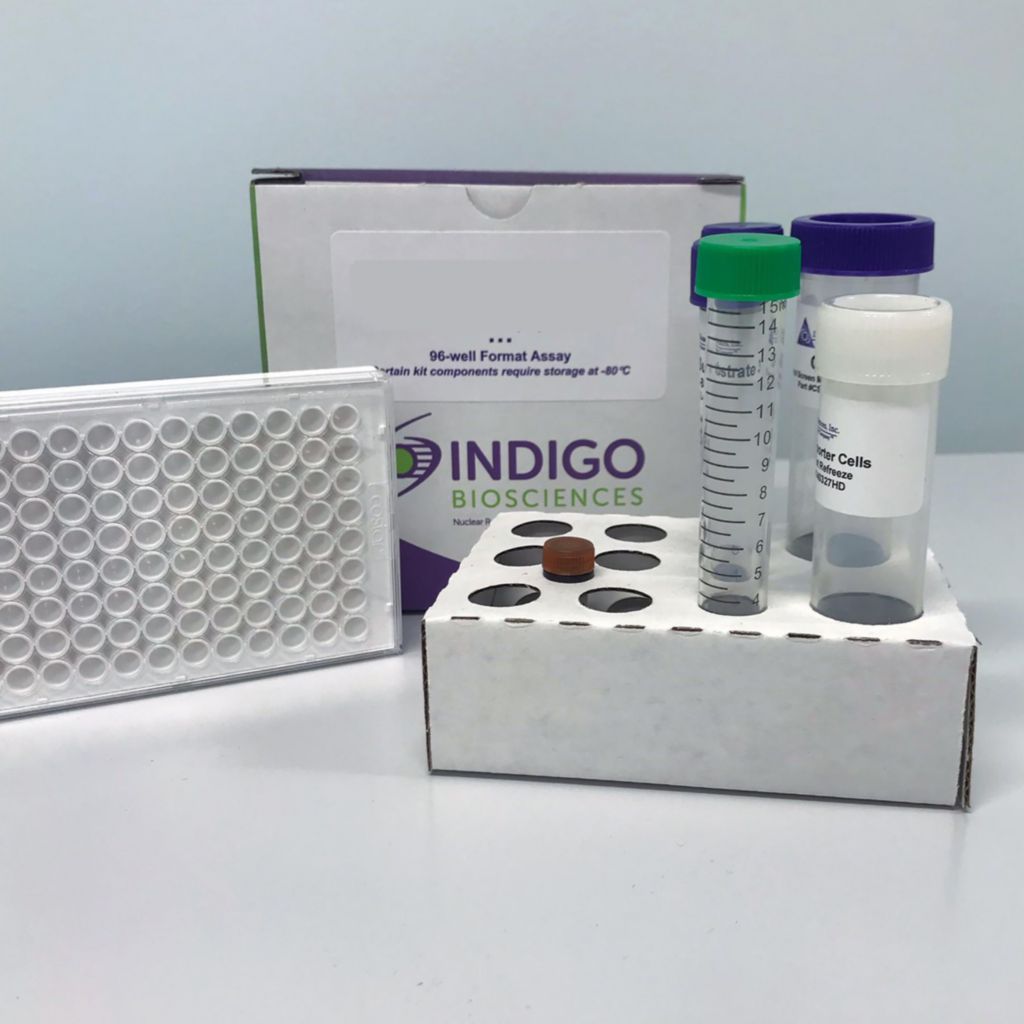Product Description and Product Data
This is an all-inclusive cell-based luciferase reporter assay kit targeting the Human Thrombopoietin Receptor (TPOR). INDIGO’s TPOR reporter assay utilizes proprietary mammalian cells that have been engineered to provide constitutive expression of Human TPOR. In addition to TPOR Reporter Cells, this kit provides two optimized media for use during cell culture and in diluting the user’s test samples, a reference agonist, Luciferase Detection Reagent, and a cell culture-ready assay plate. The principal application of this assay is in the screening of test samples to quantify any functional activity, either agonist or antagonist, that they may exert against human TPOR. This kit provides researchers with clear, reproducible results, exceptional cell viability post-thaw, and consistent results lot to lot. Kits must be stored at -80C. Do not store in liquid nitrogen. Note: reporter cells cannot be refrozen or maintained in extended culture.
Features
Clear, Reproducible Results
- All-Inclusive Assay Systems
- Exceptional Cell Viability Post-Thaw
- Consistent Results Lot to Lot
Product Specifications
| Target Type | Cytokine Receptor | ||
| Species | Human | ||
| Receptor Form | Native | ||
| Assay Mode | Agonist, Antagonist | ||
| Kit Components |
| ||
| Shelf Life | 6 months | ||
| Orthologs Available | No | ||
| Shipping Requirements | Dry Ice | ||
| Storage temperature | -80C |
Data
Target Background
This assay utilizes proprietary human cells that provide constitutive expression fo the Human Thrombopoietin Receptor (TPOR).
TPOR, also known as MPL or CD110, is a member of the type I cytokine receptor superfamily. Thrombopoietin (TPO), the physiological activator of TPOR, is a glycoprotein that regulates thrombopoiesis, the process of platelet production, as well as hematopoietic stem cell maintenance. TPO, which is constitutively produced in the liver with some contribution by the kidneys, binds to and activates the cell-surface TPOR to initiate signal transduction through several different pathways, including JAK/STAT, MAPK, and PI3K pathways.
JAK2 dependent phosphorylation and activation of the transcription factor STAT5 is a prominent outcome of TPOR activation, and it is the signaling pathway exploited by the reporter cells included in this assay. Specifically, INDIGO’s Reporter Cells contain the luciferase reporter gene functionally linked to an engineered minimal promoter sequence with upstream tandem STAT5 genetic response element (GRE) sequences. Thrombopoietin activates TPOR in a dose-dependent manner, thereby triggering the JAK2/STAT signal transduction cascade. Activated STAT5 binds to its consensus GREs to initiate the formation of a complete transduction complex that drives expression of the Luc reporter gene. Therefore, quantifying changes in luciferase activity from peptide-, drug-, or antibody-treated reporter cells relative to that of “untreated” cells provides a sensitive surrogate measure of the changes in the activity of TPOR.
TPOR has been targeted successfully in the clinic to treat conditions such as chronic immune thrombocytopenia, severe aplastic anemia, thrombocytopenia in hepatitis C patients undergoing interferon-based treatments, and thrombocytopenia in adults with chronic liver disease who will be undergoing a medical procedure. Examples of FDA-approved drugs that target TPOR include Romiplostim, Eltrombopag, Avatrombopag, ad Lusutrombopag. Accordingly, the primary application of this reporter assay is test compound as a TPOR agonist or TPOR antagonist.
Also available as a service

